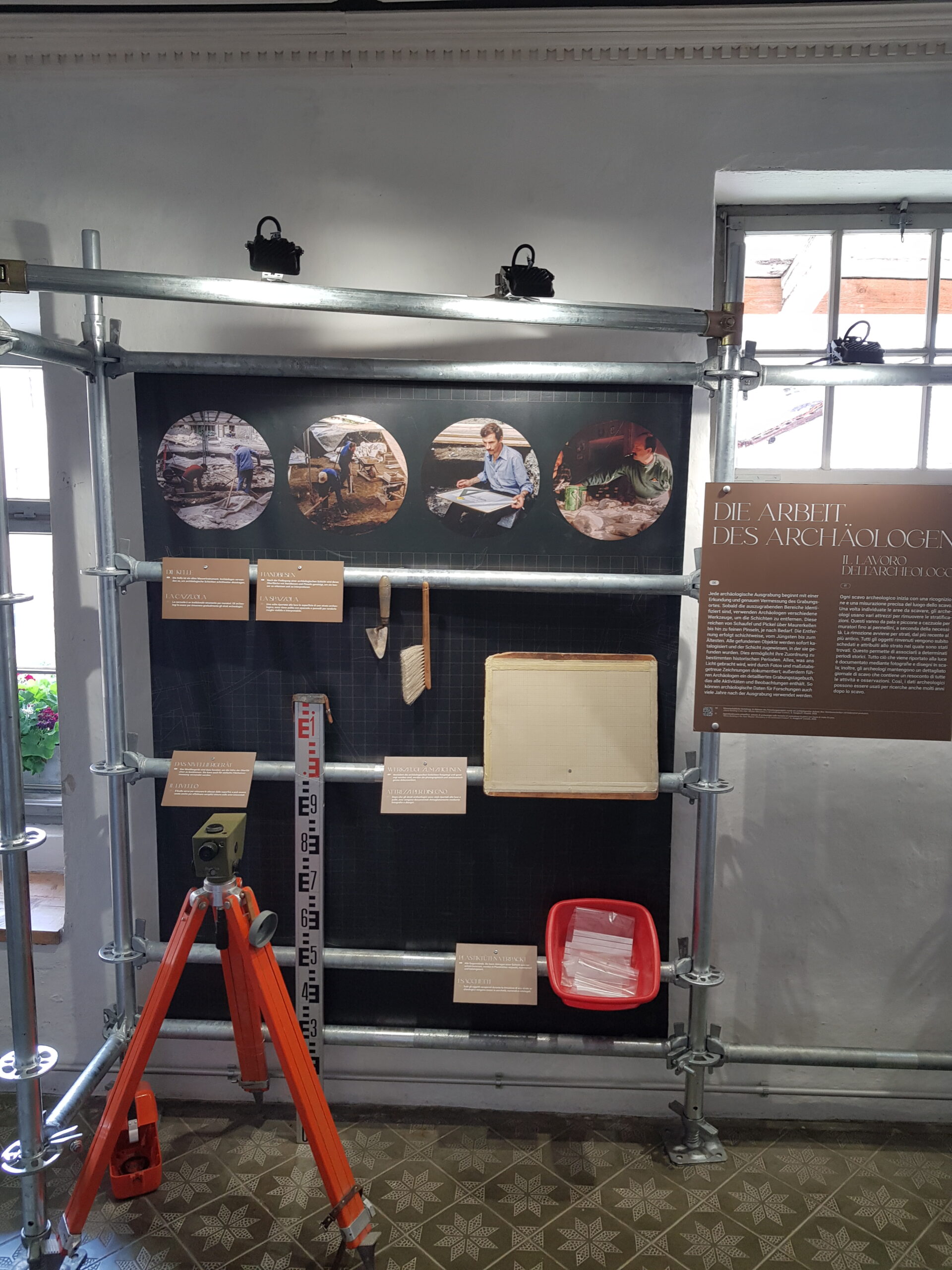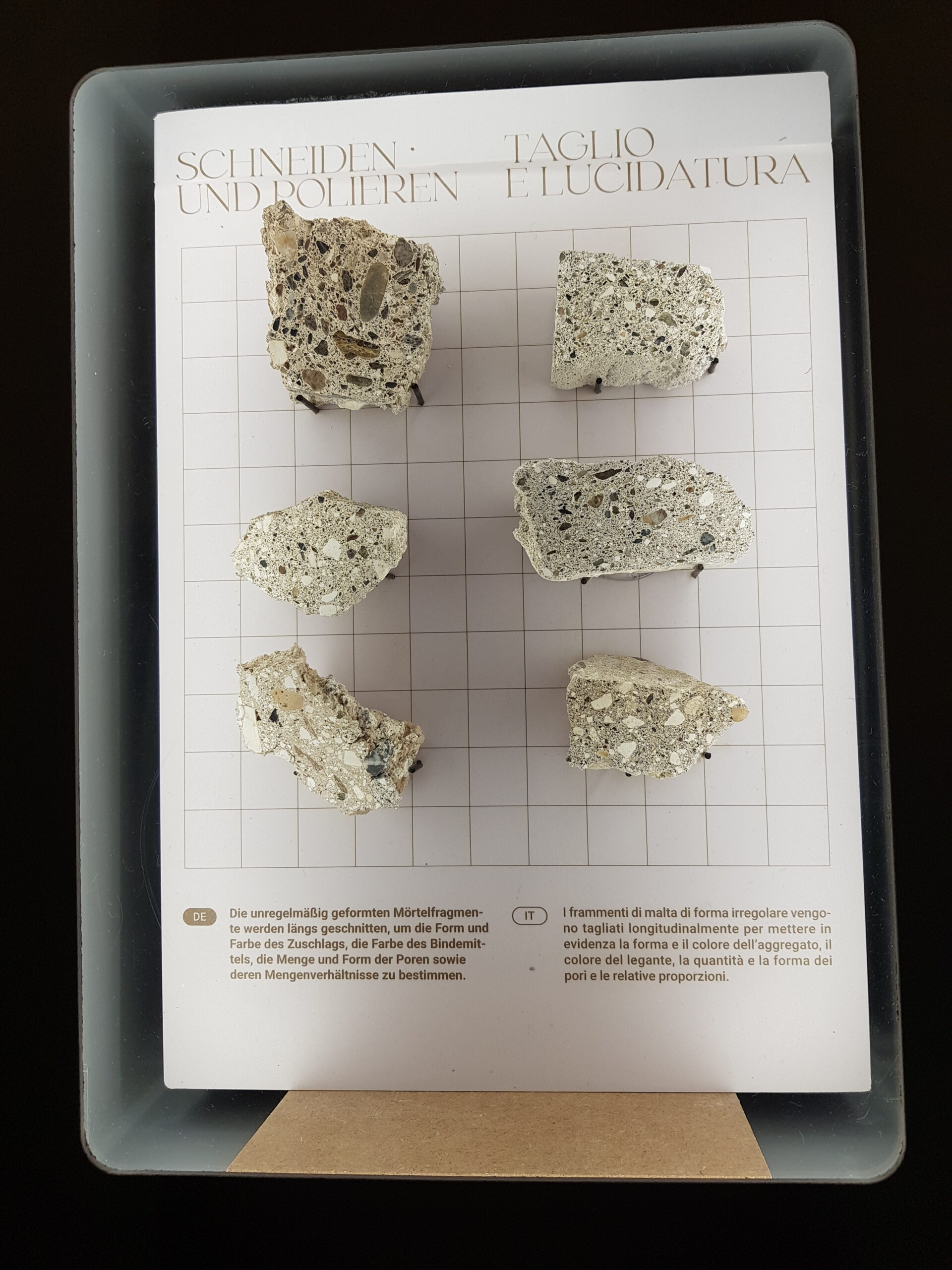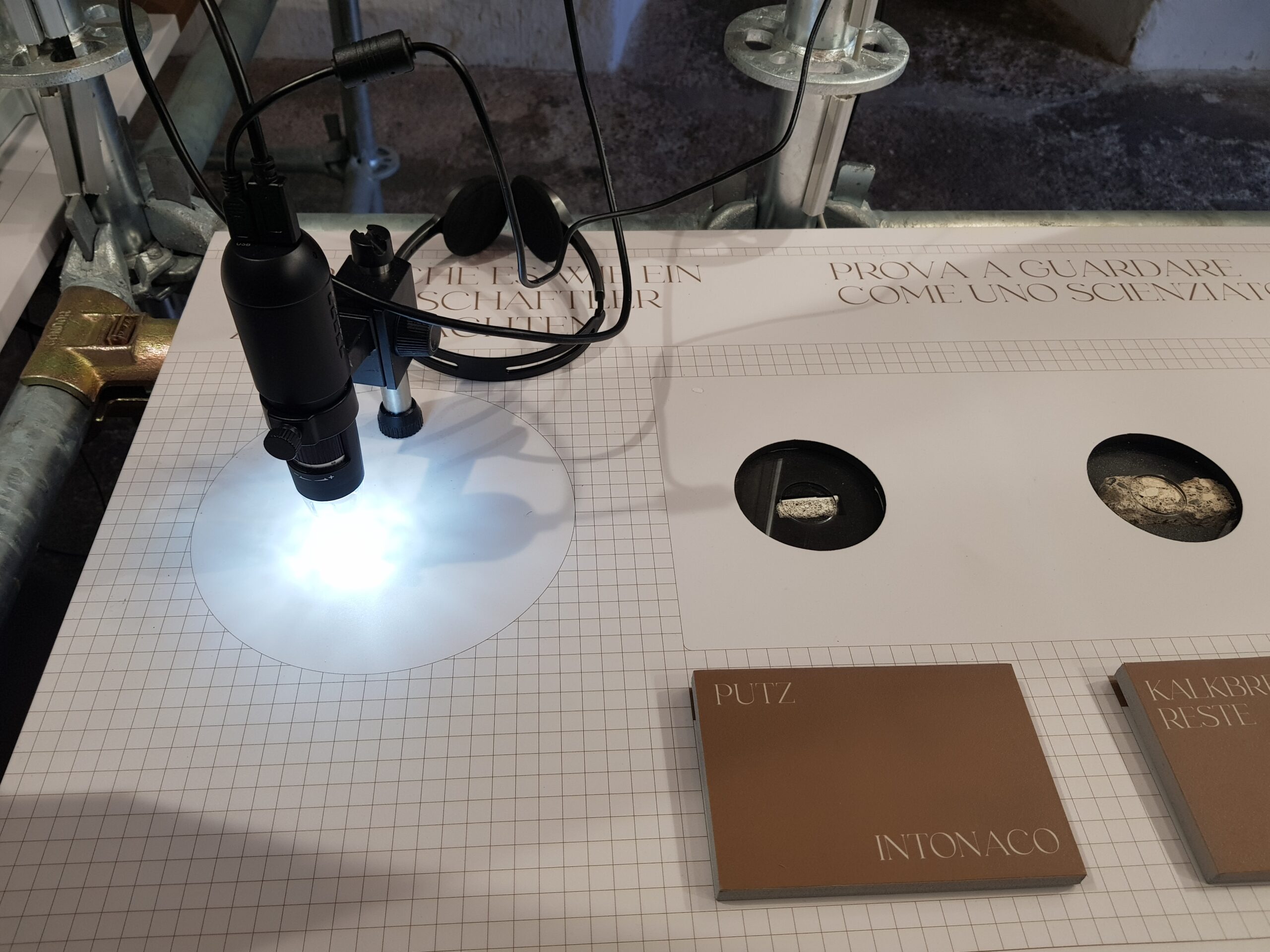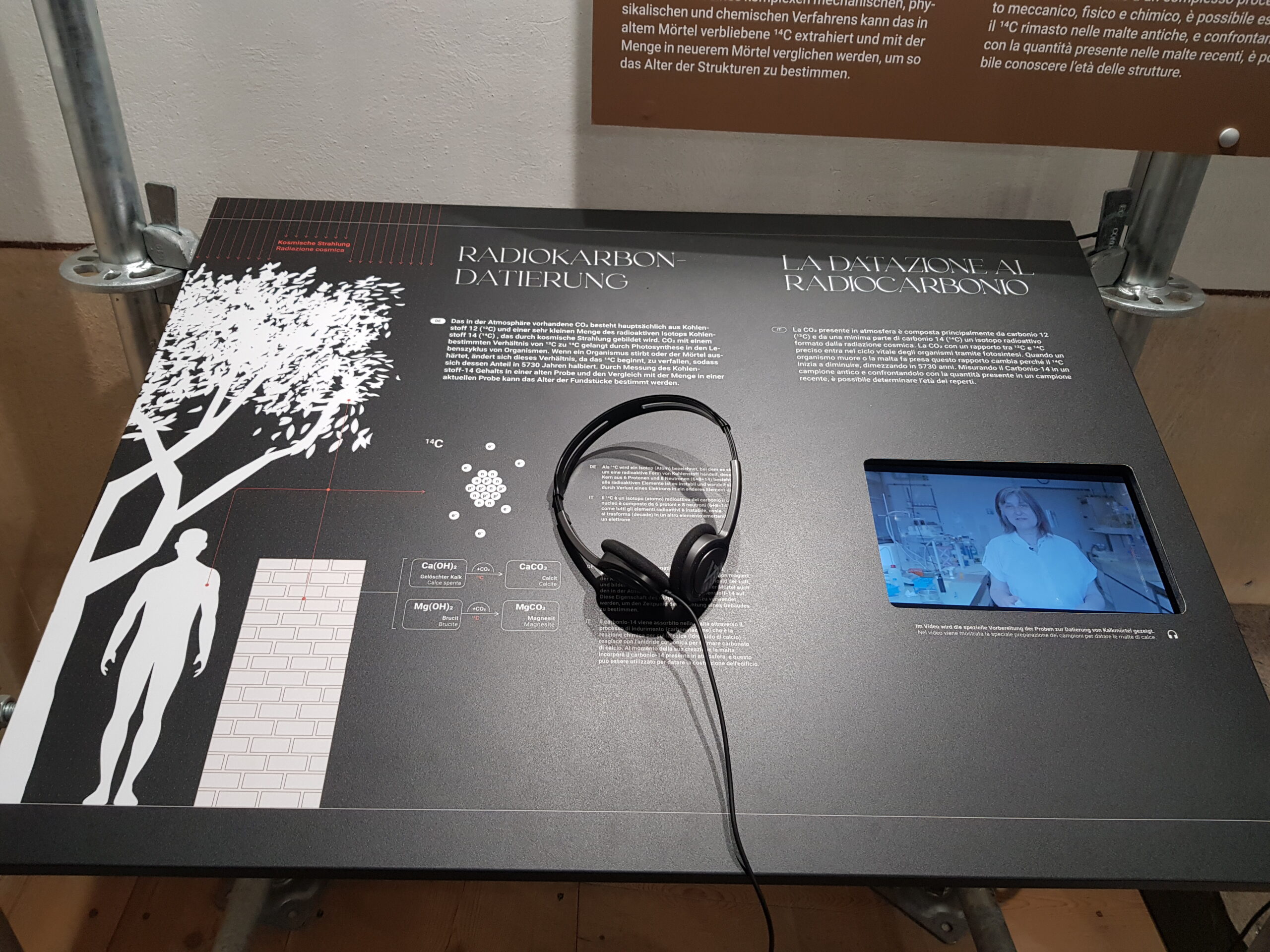Mortar. Science and history in fragments
An itinerant interactive exhibition presented by: Patrick Cassitti, Marta Caroselli, Silvia De Ascaniis, Lorenzo Cantoni

The Benedictine Convent of Saint John in Müstair – previously a Benedictine Monastery – is an important Medieval monument, part of UNESCO World Heritage since 1983. The convent was the object of study for a multidisciplinary team of experts who collaborated in a project supported by the Swiss National Science Foundation titled “Mortar Technology and Construction History at Müstair Monastery”. The project studied part of 5’000 mortar pieces collected during archaeological investigations at the convent, to retrace its construction phases as well as to understand the evolution of building technologies and methods over time. This exhibition has been realized within the frame of the SNSF Agorà funding scheme, which aims at fostering dialogue between scientists and society, encouraging researchers to communicate their current research to an audience of lay people. The exhibition communicates the way the team of experts worked, how they reached their conclusions, by highlighting discussions and margins of uncertainty to show how the interpretation of data can be determined by cultural models. The process through which archaeologists, geologists and historians create their visions of ancient times is, in fact, characterized by unsolved questions, as it often happens in science. In addition, the multiplication of diagnostic tools and the adoption of the natural sciences’ method in the humanities field (i.e. formulation of hypotheses, publication of data and reviews by the academic community) create controversies, which indeed represent a prerequisite for the advancement of knowledge.


The exhibition tells the story of the construction of the monastery of Müstair combining different communication methods and leveraging on the visualization and reconstruction affordances given by digital technologies, so to engage the attention of the public. The exhibition develops along 7 rooms, where the visitor is guided to discover the journey of a ‘humble’ mortar piece, which starts in the world of geology, from a marriage between lime and sand, then enters that of technology, passing through the teeth of a mixer, to end up in the world of art, thanks to the creative genius of Medieval architects, artists and artisans, who were able to shape magnificent buildings. Reconstructing this complex story is not easy, like completing a puzzle with missing pieces. The researchers’ interpretation fills in the gaps: the exhibition intends exactly to communicate how such ‘gaps’ are filled in. Scientists’ work is explained by their own voice through short videos, where controversies are represented in the form of discussions. Quiz-style activities follow each video, challenging visitors to participate in the conversation. The tools used by archaeologists to make excavations, collect and archive materials are also displayed, as well as samples of mortar pieces together with explanations of the geologic differences among them. Reproductions of excerpts of ancient treaties depict how building sites looked like, how builders used to work and show some magnificent buildings they were able to construct despite their limited technologies. An immersive digital installation provides a reconstruction of an ancient mortar-mixer, allowing the visitor to move it with body gestures. A 3D model placed in the middle of a large table represents a scale reconstruction of the monastery with its 4 main construction phases. The context surrounding the monastery is also acknowledged, thanks to a room entirely dedicated to figures, who represent the community that gathered around it and gives it life.


The exhibition is intended to be itinerant: it was opened in Müstair on June 10th, 2023, it was moved to Castelgrande in Bellinzona from May to November 2024, and is now available to whichever cultural site or organization in Switzerland will like to host it. The Convent of Müstair and the Fortress of Bellinzona have several aspects in common: they are both inscribed in the List of UNESCO World Heritage Sites because they are outstanding examples of historic architecture influenced by the site and topography; they are located in key strategic places for Switzerland, which are the borders with – respectively – the Eastern part and the Southern part of Europe; they reflect both the history of their construction, the political and socio-economic relations in the respective regions as well as between them.
Two main audiences are addressed: tourists, who are able to access the stand-alone exhibition; and secondary and high-school students, who are accompanied by a guide and participate in hands-on workshops, organized by the hosting museum. The exhibition is entirely available in two languages, which can be chosen by the visitors: Italian and German. This choice is justified by the audience that has been foreseen, who mainly comes from within Switzerland and the neighbouring countries (mainly Italy, Austria and Germany). The materials developed for the interactive exhibition will be collected in a dedicated website, so to ensure access and sustainability over time. In addition, materials prepared for the local schools’ hands-on workshops will be left to the hosting museum to be reused for educational purposes.
For a deeper insight into the project and its scientific and educational significance, click here!